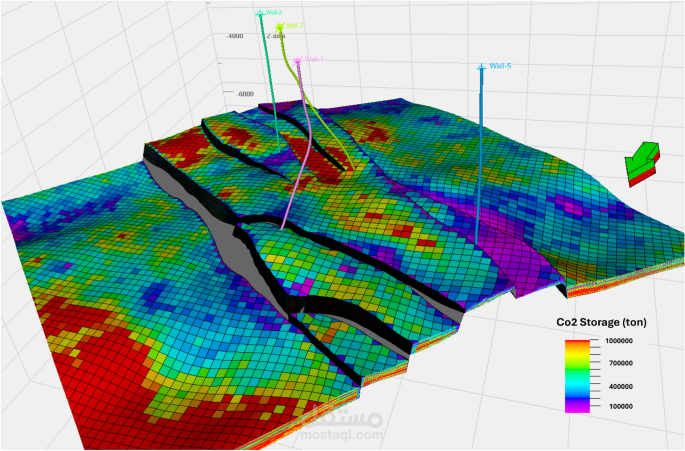Reservoir Dynamics Analysis after 10 Years Oil Productions Shut-In i
تفاصيل العمل
The report presents a comprehensive analysis of the dynamics of petroleum reservoirs that
have experienced long production shut-in periods (10 Years), focusing on the fundamental
changes in reservoir pressure, fluid distribution, and fluid properties. The report outlines a
practical, multi-step methodology for modeling these changes, starting from the collection of
historical and recent data, proceeding through the analysis of pressure recovery using modern
pressure tests compared with initial data, and culminating in advanced numerical modeling
using Eclipse software to simulate fluid redistribution and analyze saturation changes, including
phenomena like water segregation and potential secondary gas cap formation.
The practical applications of the study results are reviewed, providing specific recommendations
for future reservoir development decisions based on different pressure recovery scenarios.
Additionally, strategies are presented for optimizing well restart plans and adjusting production
rates to avoid operational risks such as rapid pressure decline or water coning.
To evaluate the infill potential on Tasour and Godah fields. The existing simulation model
needed an update to better fit this purpose as more wells and history data are available now.
The Petrel geological model used has been updated up to T-27. The Eclipse simulation model
was build using the new structure and populated using the well logs and input data from the T-9
SCAL study. Furthermore a new J-function based initial water saturation model was
implemented.
Furthermore, the report includes a detailed analysis of the timeline for implementing a
comprehensive study of post-shut-in reservoir dynamics, estimating duration of 6 to 9 months.
The report also discusses time line considerations when studying multiple fields, noting that
costs do not scale linearly and depend significantly on the degree of similarity between fields
and project management efficiency. The report concludes by offering recommendations for
timeline acceleration
